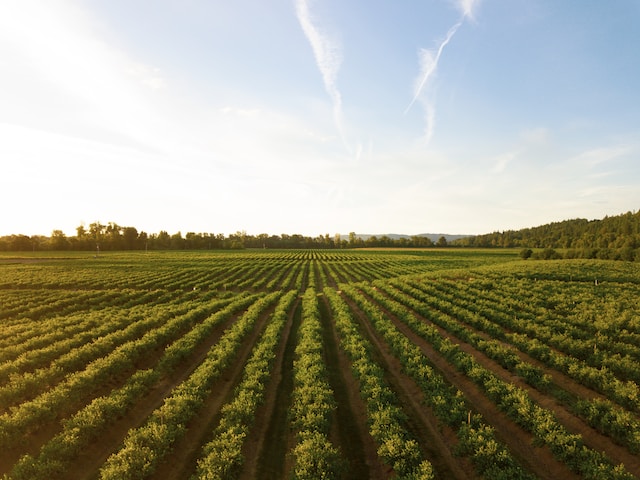This blog post explores regenerative agriculture, a sustainable farming approach that enhances soil health, biodiversity, and ecosystem balance. Contrasting traditional agriculture, it employs crop rotation, cover cropping, and minimal soil disturbance. Its history traces back to ancient farming, gaining recent prominence due to environmental concerns. The benefits include improved soil health, enhanced water retention, biodiversity, carbon sequestration, and climate resilience. Challenges like economic barriers, knowledge gaps, and resistance to change are significant but surmountable. The future of regenerative agriculture is promising, with potential widespread impacts on global food systems and environmental health, offering a hopeful path to a sustainable and resilient future.
Introduction
Regenerative agriculture represents a paradigm shift in farming, focusing on sustaining and actively enhancing environmental health. This approach, increasingly recognized for its vital role in sustainable agriculture, emphasizes restoring soil health, increasing biodiversity, and improving ecosystems. In the face of global challenges like climate change and soil degradation, regenerative agriculture offers a promising path forward. This blog post delves into the essence of regenerative farming, exploring its principles, how it diverges from traditional agriculture, its history and growing significance, its advantages, its challenges, and its potential future impact on our planet’s health and sustainability.
Understanding Regenerative Agriculture
Regenerative agriculture is a holistic approach to farming that aims to rehabilitate and enhance the farm’s ecosystem by focusing on soil health, water management, and biodiversity. Its fundamental principles include minimizing soil disturbance, using cover crops, implementing crop rotation, and integrating livestock. This approach contrasts with traditional agriculture, which often relies on extensive tillage, monoculture, and heavy use of chemical fertilizers and pesticides. While conventional methods focus on maximizing yields in the short term, regenerative agriculture prioritizes the long-term health and sustainability of the land.
The History of Regenerative Agriculture
Regenerative agriculture, though recently popularized, has roots in ancient agricultural practices. Traditional societies often employ methods like crop rotation and polyculture, which are inherently regenerative. Modern regenerative agriculture emerged as a response to the drawbacks of industrial farming, gaining prominence in the mid-20th century with pioneers like J.I. Rodale advocating for organic agriculture. Recently, it has gained traction due to growing concerns about climate change, soil degradation, and sustainability. As awareness of the environmental impacts of conventional farming grows, so does the interest in regenerative practices that promise long-term ecological balance and sustainable food production.
Advantages of Regenerative Agriculture
Regenerative agriculture offers numerous benefits, the key being soil health improvement. Healthier soils enhance carbon sequestration, drawing CO2 from the atmosphere, which is crucial in combating climate change. This approach also improves water retention in the soil, reducing the need for irrigation and enhancing resilience against drought. Furthermore, regenerative practices promote biodiversity, supporting a more comprehensive plant and animal life range. These benefits contribute to the long-term sustainability of agricultural systems, making them more resilient to environmental changes and ensuring sustainable food production for future generations.
Challenges in Regenerative Agriculture
Regenerative agriculture, while beneficial, faces several challenges. Economic and logistical barriers can deter farmers, such as the initial investment for transitioning and the lack of immediate financial returns. Knowledge and skill gaps present another hurdle, as regenerative methods often require new techniques and a deeper understanding of ecological processes. Additionally, there’s resistance to change from conventional farming methods, which are deeply entrenched and supported by existing agricultural policies and market structures. Overcoming these challenges is essential for the broader adoption of regenerative practices.
The Future of Regenerative Agriculture
The future of regenerative agriculture looks promising, shaped by increasing awareness of its environmental benefits and the growing demand for sustainable food production. Trends indicate a shift towards more holistic, ecologically focused farming practices driven by consumer demand, environmental policies, and technological advancements. Its potential impact on global food systems is significant, offering a sustainable solution to food security while mitigating climate change impacts. Adopting regenerative practices could lead to healthier ecosystems, improved soil quality, and a more resilient food system globally.
Conclusion
Regenerative agriculture is a pivotal movement in shaping a sustainable future, offering a path to healthier soils, enhanced biodiversity, and reduced environmental impacts. Its significance extends beyond food production; it’s about healing the planet. The continued research, innovation, and widespread adoption of these practices are essential for realizing their full potential. Looking ahead, there’s optimism in regenerative agriculture’s role in creating a more resilient and sustainable world, offering hope for restoring ecological balance and ensuring the well-being of future generations.


